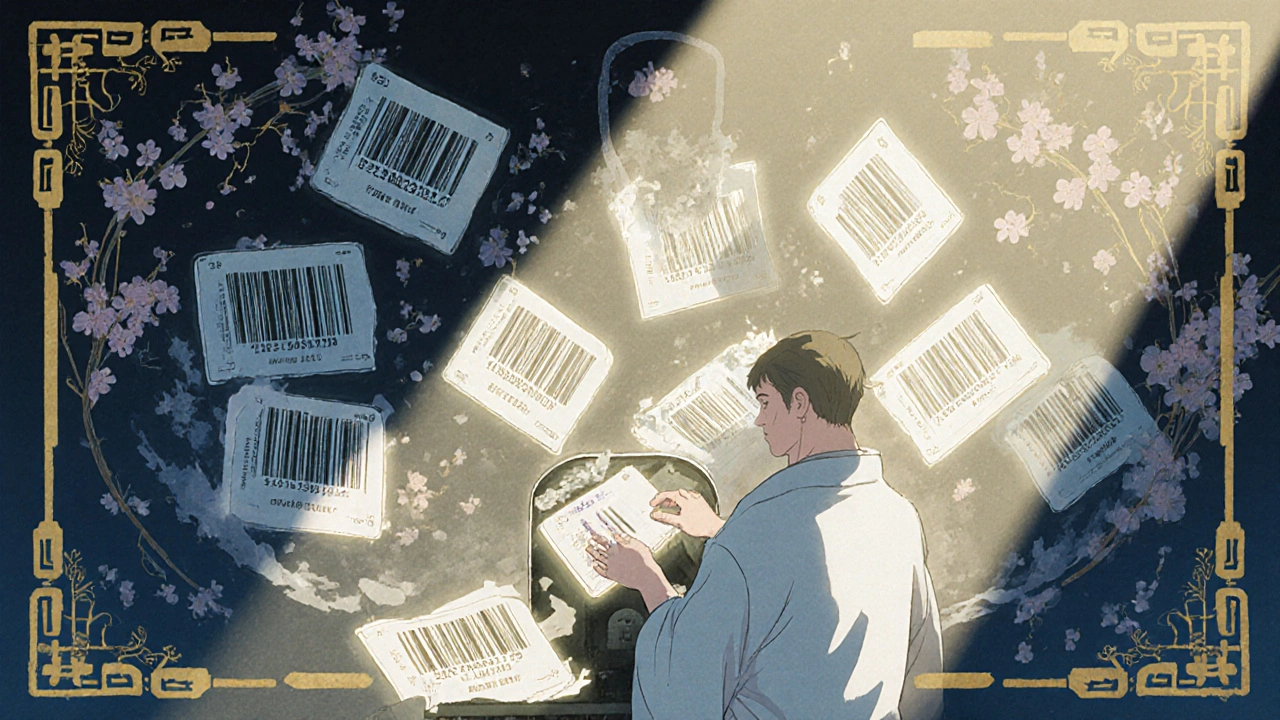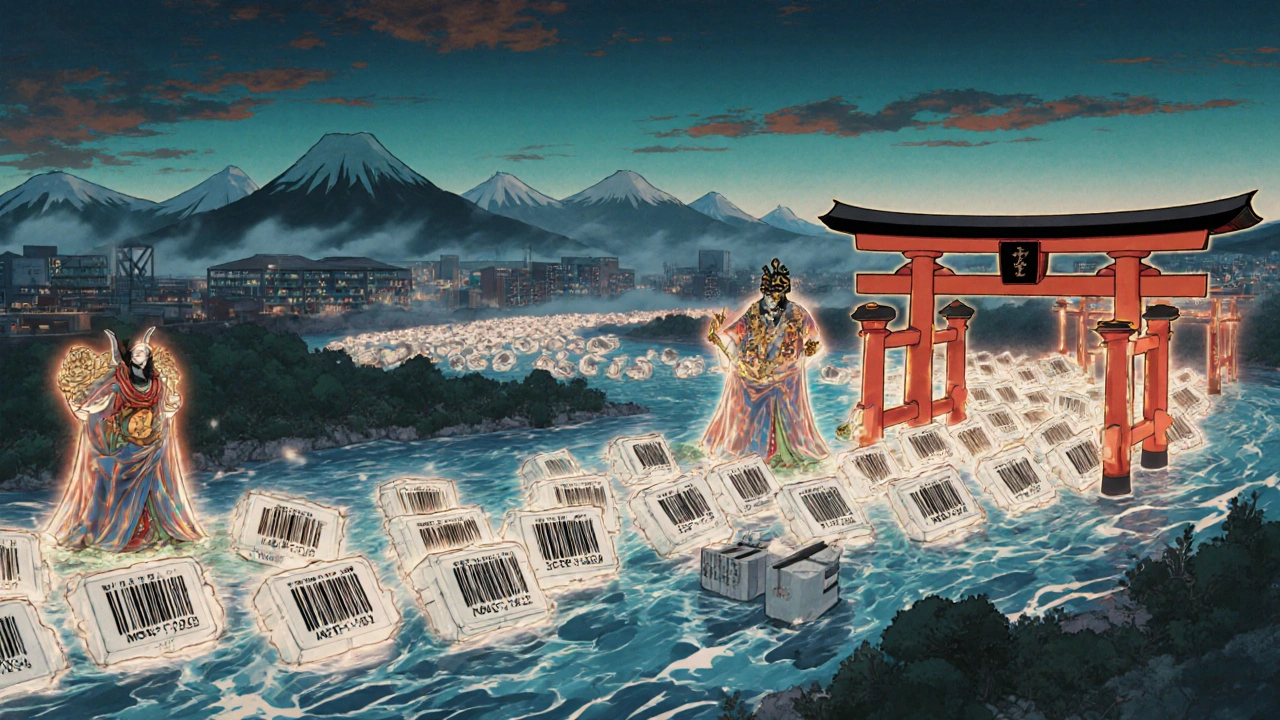Supply Chain Security: How Legitimate Drugs Are Protected from Counterfeit Threats

Every year, more than 5.8 billion prescription drug packages move through the U.S. supply chain-from factories to pharmacies, then into the hands of patients. Behind this massive flow is a hidden battle: keeping fake, contaminated, or stolen drugs out of the system. Counterfeit medications don’t just waste money-they can kill. A single batch of fake insulin, cancer drug, or antibiotics can spread across states before anyone notices. So how do we stop it? The answer isn’t just better policing. It’s a complex, high-tech, government-mandated system called the Drug Supply Chain Security Act (DSCSA).
What the DSCSA Actually Does
Passed in 2013, the DSCSA isn’t a suggestion. It’s the law. And it’s not about stopping one bad actor. It’s about making the entire drug supply chain transparent. Every prescription drug package must now carry a unique digital fingerprint-a 2D barcode called a Unique Product Identifier (UPI). That barcode holds four key pieces of information: the National Drug Code (NDC), a serial number, the lot number, and the expiration date. That’s over 1.2 million unique codes generated every single day across the U.S. These aren’t just labels. They’re digital keys. When a pharmacy receives a shipment, they scan each package. The system checks that serial number against the manufacturer’s database in seconds. If it’s a duplicate, expired, or never issued, the system flags it. No manual lookup. No guesswork. Just instant verification. The goal? Three things: prevent fake drugs from entering the system, catch them if they slip through, and pull them out fast. And it’s working. Since 2015, counterfeit drug seizures by the FDA have dropped by 63%. In 2014, there were over 1,100 incidents. By 2022, that number was down to 412.How the System Talks to Itself
The magic isn’t just in the barcode. It’s in how the data moves. Every time a drug changes hands-manufacturer to wholesaler, wholesaler to hospital, hospital to pharmacy-electronic records must be exchanged. This isn’t email or spreadsheets. It’s a standardized system called EPCIS, built by GS1, the same group behind barcodes you scan at grocery stores. EPCIS handles over 15 million transactions daily with 99.95% accuracy. That means if a hospital receives 10,000 bottles of a drug, the system knows exactly which 10,000 were shipped, from where, when, and by whom. If one bottle turns out to be fake, they can trace it back to the exact pallet, truck, and warehouse-within minutes. This system also enforces something called Authorized Trading Partners (ATP). Every company in the chain-manufacturers, distributors, pharmacies-must be verified by the FDA before they can legally handle prescription drugs. The FDA’s ATP Verification Router Service checks over 50,000 requests a day. If a company isn’t on the list, the system blocks them. No exceptions.Real-World Impact: When It Works
The system isn’t theoretical. It’s saved lives. In 2022, during the infant formula crisis, the DSCSA system was put to the test. When a contaminated batch was identified, regulators used the digital trail to pinpoint exactly which stores had received it. They pulled every affected package off shelves in 72 hours. Before DSCSA, that process took an average of 14 days. That delay could have meant more babies getting sick. Merck’s global serialization team reported that after upgrading to EPCIS 2.0, their verification time dropped from 15 minutes per batch to just 47 seconds. In the first quarter of 2023 alone, they prevented 212 suspect products from reaching patients. Even small pharmacies are seeing results. One independent pharmacist in Ohio told a pharmacy forum that the ATP system blocked three fake drug offers from unauthorized suppliers in one month. Those offers would’ve been easy to miss without verification.
Where the System Still Struggles
But it’s not perfect. Repackaged drugs are a weak spot. When a hospital or pharmacy repackages bulk medication into smaller doses, the original barcode is often destroyed. That means the digital trail breaks. There’s no universal standard yet for re-serialization in these cases, and it’s a known vulnerability. Small pharmacies are struggling too. A 2023 survey found that 63% of independent pharmacies with fewer than 10 employees had trouble meeting the 2023 deadline for full electronic data exchange. One owner said compliance cost him $18,500 a year-3.2% of his net profit. For many, that’s not a cost. It’s a threat to survival. And there’s the false positive problem. The system flags suspicious packages based on anomalies. But sometimes, it’s wrong. One pharmacy tech on Reddit reported an 8.3% false positive rate. That means for every 100 scans, eight are flagged as fake-when they’re not. Those errors create delays, extra work, and frustration.International Differences and the Global Challenge
The U.S. isn’t alone. The European Union runs its own system: the Falsified Medicines Directive (FMD). It’s similar but different. Instead of decentralized data exchange like DSCSA, the EU uses a centralized database. Every time a drug is dispensed at a pharmacy, the barcode is “decommissioned” in a national system. It’s more rigid, but it’s also harder to bypass. The problem? The two systems don’t talk to each other. A drug made in Germany and shipped to the U.S. must be scanned twice-once under FMD rules, once under DSCSA. That doubles the cost and complexity for global manufacturers. PwC found that multinational companies pay 22% more to comply with multiple systems than U.S.-only firms. China forced serialization on all manufacturers overnight in 2019. Result? 37% of local companies couldn’t keep up. Supply chains broke. The U.S. took 14 years to roll out DSCSA. That slow, phased approach helped companies adapt. But it also left gaps for bad actors to exploit during the transition.
What’s Next? The Road to 2027
The final piece of DSCSA kicks in by November 2027: full interoperability. That means every player in the chain-no matter their size or software-must exchange data in the same format, using the same standards. Paper records will be banned. All transactions must be electronic. Right now, 14% of drug shipments still use paper. That’s a huge risk. A handwritten log can be forged. A lost receipt can’t be traced. By 2027, that’s over. The FDA is already pushing for EPCIS 2.0 in JSON format by November 2025. That’s faster, more flexible, and easier for computers to process than the older XML system. But 78% of companies are still using the old version. They’re racing to catch up. New tech is creeping in. Some companies are testing blockchain to lock the digital trail. Others use AI to spot unusual patterns-like a sudden spike in drug returns from one region. IoT sensors are being added to cold-chain shipments to track temperature changes that could spoil vaccines or insulin.Can It Be Improved?
Experts agree: the system works-but it’s not finished. Dr. Amir Attaran from the University of Ottawa points out a big flaw: enforcement. In 2022, only 47% of wholesale distributors were actually doing the required ATP verifications. The FDA doesn’t have the staff to audit everyone. So compliance relies on companies doing the right thing. The American Pharmacists Association recommends a smarter approach: prioritize high-risk drugs. Don’t scan every pill. Scan the expensive ones, the ones with high abuse potential, the ones most likely to be counterfeited. That cuts verification time by 40% without lowering safety. And the cost? It’s high. Deloitte estimates mid-sized manufacturers spend $500,000 to $2 million to get compliant. The National Community Pharmacists Association says small pharmacies need $1.2 billion more to reach full compliance by 2027. That’s a lot for a business that makes $300,000 a year.Why This Matters to You
You might think this is just a problem for big pharma and hospitals. But it’s not. If you take prescription medication-especially for diabetes, heart disease, or mental health-you’re relying on this system every day. A fake blood pressure pill could send you into a stroke. A counterfeit antibiotic could leave you with a deadly infection. The DSCSA doesn’t make the system perfect. But it’s the most advanced, real-world defense we have against a silent, deadly threat. It turns an invisible supply chain into a visible, trackable, verifiable network. And that’s what keeps millions of people safe. As the system evolves-faster, smarter, more connected-it won’t just stop counterfeits. It might one day predict them. McKinsey projects that by 2030, this infrastructure will evolve into a predictive tool, cutting counterfeit incidents by 95%. That’s not science fiction. It’s the next step.What is the DSCSA and why does it matter?
The Drug Supply Chain Security Act (DSCSA) is a U.S. law passed in 2013 that requires every prescription drug package to have a unique digital identifier. It ensures that drugs can be tracked from manufacturer to patient, helping to catch and remove counterfeit, stolen, or contaminated products. It matters because it protects patients from dangerous fake medications.
How do I know if my medication is real?
You can’t verify it yourself directly, but your pharmacy can. Pharmacies scan every package you receive using a 2D barcode reader. If the serial number doesn’t match the manufacturer’s database, the system flags it as suspect. If your medication was ever flagged, your pharmacist would be notified and would not dispense it.
Are counterfeit drugs common in the U.S.?
They’re rare-thanks to the DSCSA. In 2014, there were over 1,100 counterfeit drug incidents reported. By 2022, that number dropped to 412. Most fake drugs still enter the country through illegal online pharmacies, not the regulated supply chain. The system has made it extremely hard for counterfeits to reach patients through legal channels.
Why do some pharmacies complain about DSCSA compliance?
Because it’s expensive and complex. Small pharmacies need to buy new scanners, software, and train staff. One independent pharmacy owner said it cost him $18,500 a year-3.2% of his profit. For many, that’s a heavy burden, especially when they’re already stretched thin.
What happens if a fake drug gets through?
If a package is flagged as suspect, the pharmacy must quarantine it immediately and notify the manufacturer and FDA within 24 hours. The manufacturer investigates the serial number. If confirmed fake, the FDA issues a recall. The system can trace the drug back to the exact warehouse and shipment-often within hours. That’s how fake drugs are stopped before they hurt anyone.
